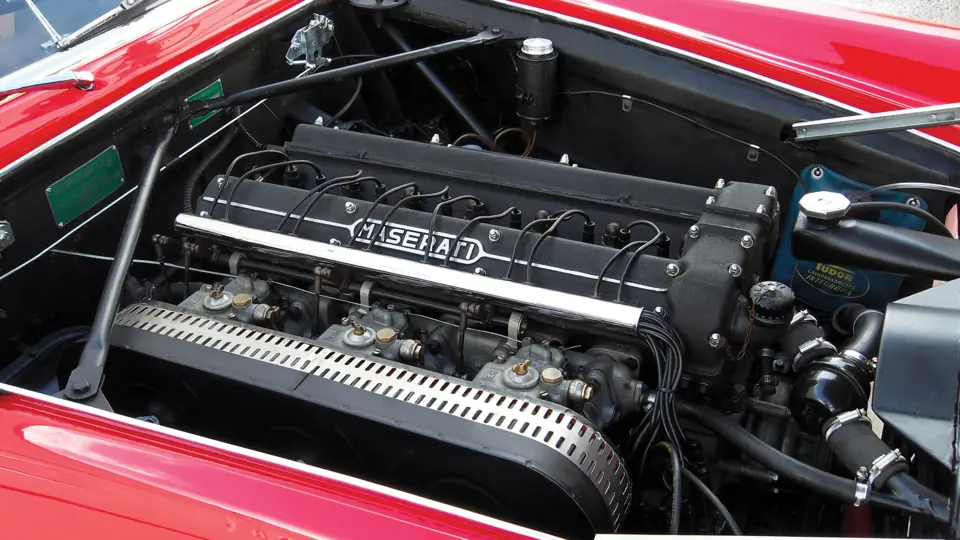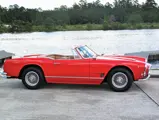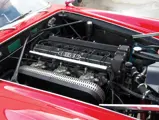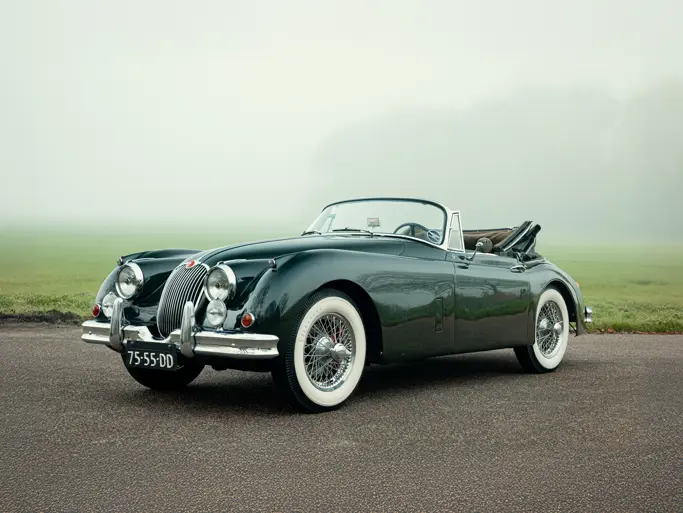220 hp, 3,485 cc DOHC twin spark-plug inline six-cylinder with triple Weber carburetors, five-speed ZF manual transmission, independent front suspension with upper and lower A-arms, coil springs, and anti-roll bar, live axle with radius arms and semi-elliptical leaf springs, and Girling front disc and rear drum brakes. Wheelbase: 100 in.
The Maserati brothers—Aflieri, Bindo, Carloe, Ettore, Ernesto, and Mario—began by building race cars in Italy in the 1920s. They won early and often, including the Targa Florio in 1926 in their first race with a new car. In 1937, Omer Orsi took control of Maserati, though the brothers stayed on until 1947, when they left to found OSCA.
Maserati deservedly earned a formidable reputation in the early 1950s with its Formula monopostos and two-seat sports racers. No doubt, this rubbed off on the road cars. Like its competition, Maserati produced a variety of engine configurations, including inline fours and sixes, V-8s, and V-12s. It chose its rugged straight six as the engine of choice for the beautiful 3500 GT first introduced at the Geneva Salon in early 1957. The 3500 GT proved a significant car for Maserati, as its chassis and running gear, with steady development, which underpinned subsequent Sebring and Mistral variants through to the end of the 1960s.
The chassis and suspension were much like its predecessor, the AG654, as they were composed of large diameter steel tubes with sheet steel stiffeners. Its pièce de résistance, however, was the detuned twin-cam six from the 350S racing Maserati, offered in a more civilized form. Featuring 220 horsepower, the 3,485-cubic centimeter inline six-cylinder with twin spark-plug ignition yielded an impressive top speed of 134 mph in contemporary road tests. The gearbox came from ZF, brakes from Girling, the rear axle from Salisbury, and the front suspension from Alford and Adler. Coachwork was by outside suppliers, too, with coupe bodies coming from Touring of Milan, while cabriolets came from Vignale of Turin on a design by Michelotti, the latter riding a two-inch shorter chassis—in all, very impressive hardware.
For the first time, Maranello had a formidable competitor, not just by performance measurements but in terms of sales. This was Maserati’s most serious effort to date. By 1960, the factory was delivering as many as 10 per week. In order to keep demand strong, Maserati phased in improvements, including center-lock wheels, a limited slip differential, and front disc brakes in 1959, as well as an optional ZF five-speed manual transmission in 1960. The gearbox became standard the following year. Contemporary road tests listed a top speed of 134 mph.
Ten years after the introduction of Maserati’s first road car, it was the 3500 GT that effectively achieved the marque’s transition from racing car to road car manufacturer. Today, the 3500 GT is credited with giving Maserati a rapid exit from the dire straits of an acute economic crisis and transitioning the maker from one of race cars to road cars. A total of 1,972 Coupes and Convertibles were built between 1957 and 1964. The original concept for the car, devised by owner Adolfo Orsi and designer Giulio Alfieri, called for a fast GT that would be exciting to drive but also comfortable and practical for daily use. No doubt, Maserati’s effort was by all definitions a success.
CHASSIS NUMBER 1337
Factory records note that chassis number 1337 was built on October 20, 1961. It is equipped with power windows, front disc brakes, and Weber carburetors, as it was built—the form in which the 3500 GT Spyder is much preferred by today’s discriminating collectors. While the current owner has been in possession since 2010, the car had remained in single ownership from 1981 until 2008, under the astute care of an enthusiast who addressed any need that developed. Meticulous records were kept during that time and are available on file. The current owner has continued to care for and regularly maintain the car during the last five years. A January 3, 2000, receipt indicates an engine rebuild at 52,626 kilometers by Deutschland Automotive, of Tucker, Georgia, at which time the engine was removed and disassembled and thoroughly gone over. Less than 2,000 kilometers and eight years later, at 54,588 kilometers, a new clutch was installed.
Offered in a beautiful shade of red with a contrasting tan leather interior and tan cloth convertible roof, this Maserati is complemented by a set of 16-inch Borrani wire wheels. The paint, exterior, and chrome all present nicely. This is a lovely example of one of the most sporting of early 1960s Maseratis, with all of the best features and benefiting from long-term enthusiast care.
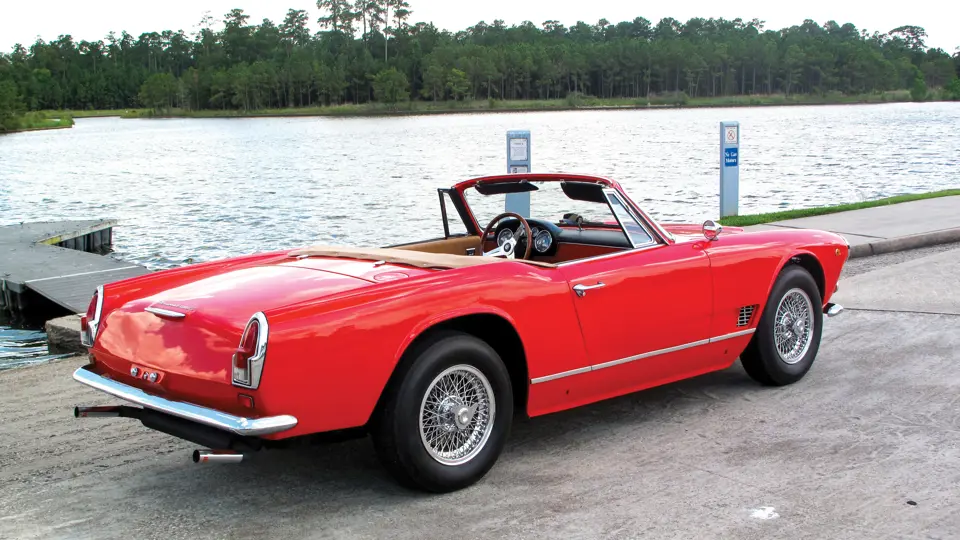



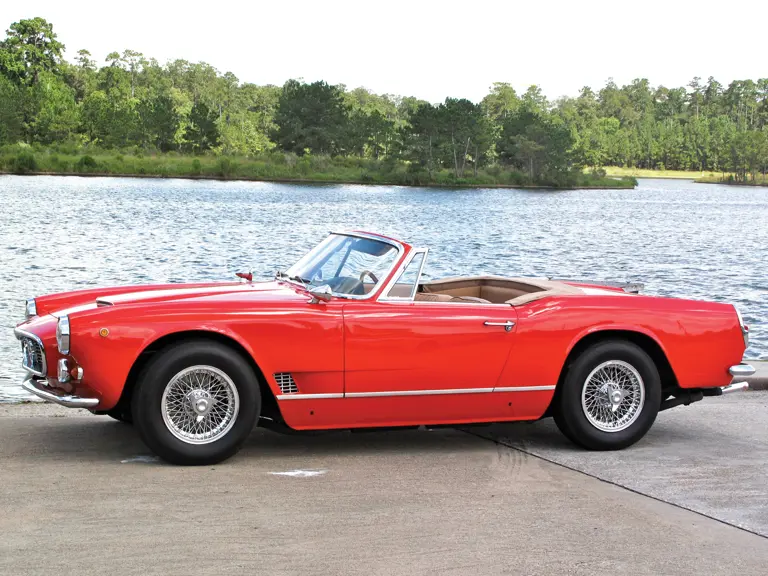
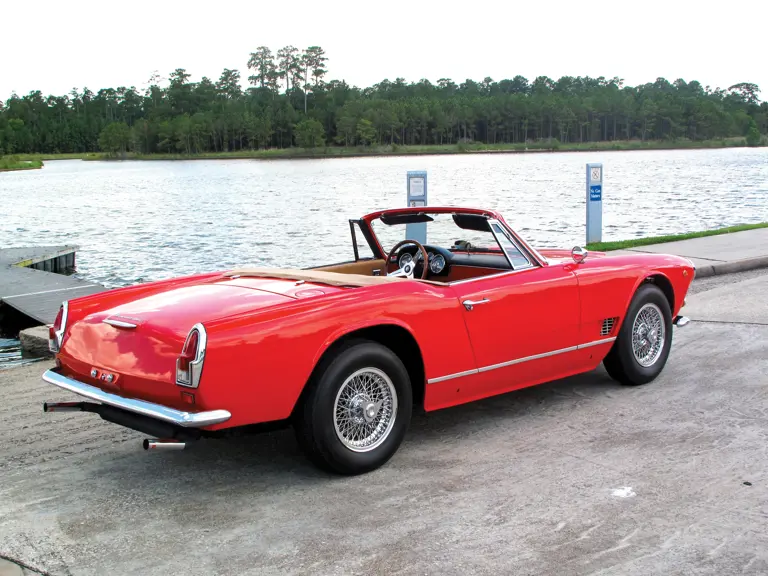

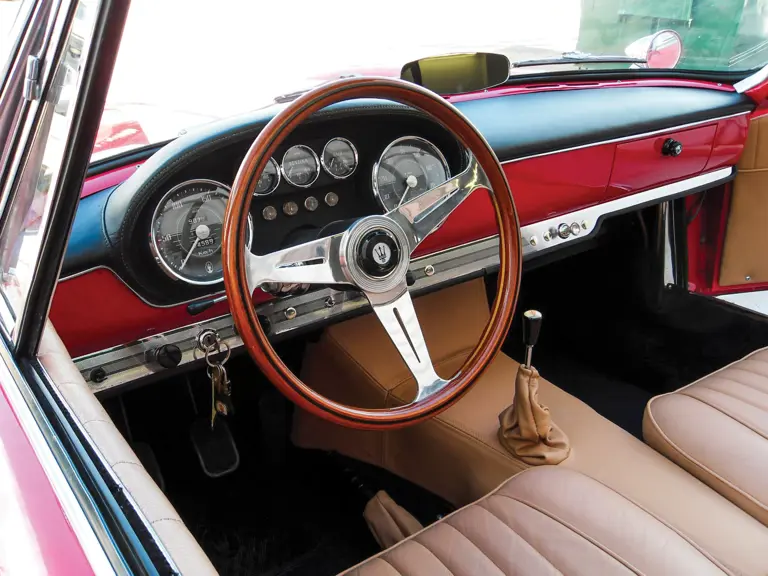
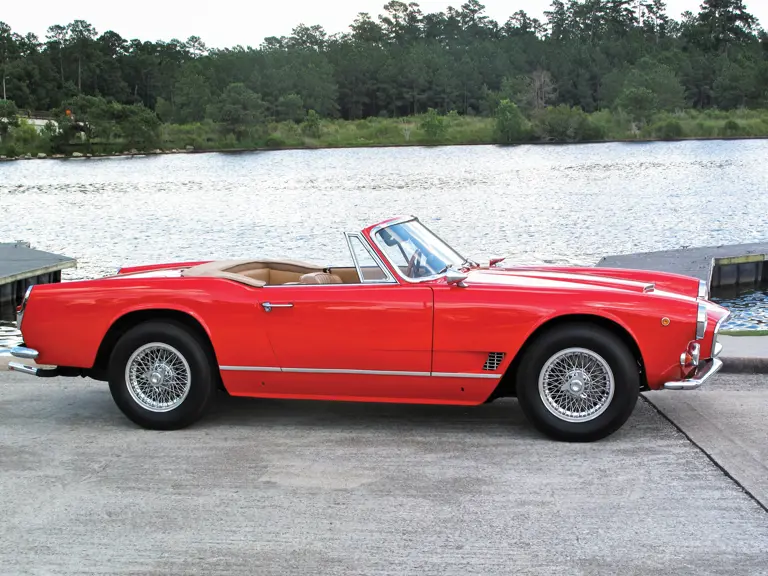
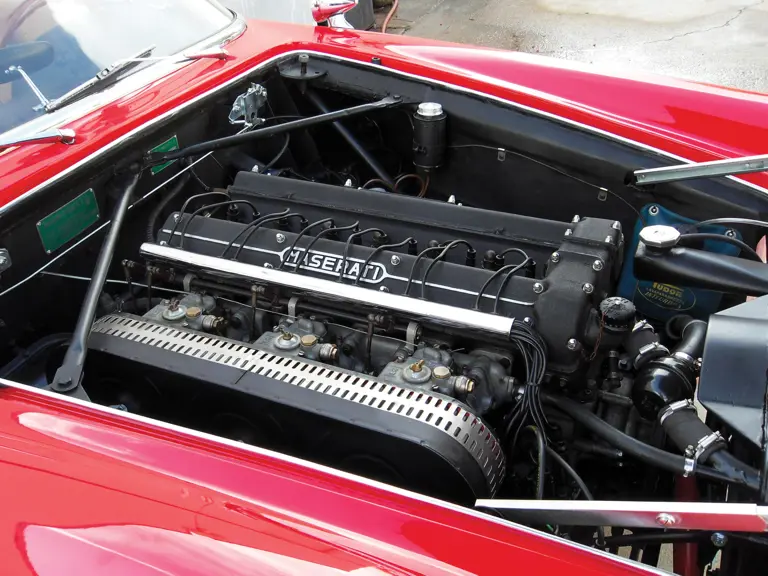

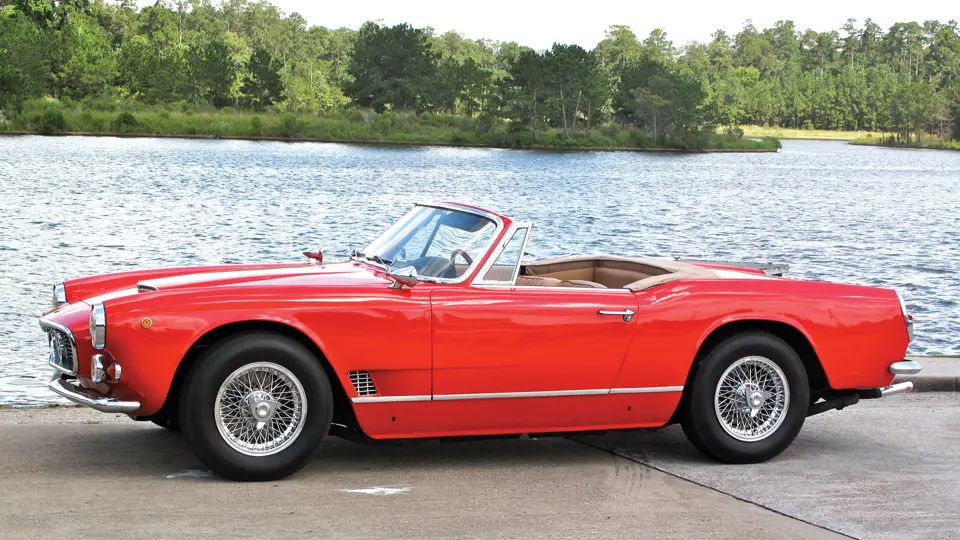
 | Monterey, California
| Monterey, California

